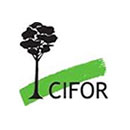Amazing as it sounds, forest regrowth now constitutes Costa Rica’s largest forest resource outside protected areas. Low earnings from ranching along with government payments to landowners that let their fields revert to forest convinced many ranchers to do just that. Meanwhile, as the country rapidly runs out of high value species such as mahogany and cedar, sawmill owners have taken interest in the non-traditional species and small diameters founds in secondary forests. Giovanni Berti’s excellent masters thesis, ’Recent Transformations in Costa Rica’s Forestry Industry and Policies and their Implications for Secondary Forests’, written in Spanish, documents that process.
Berti surveyed 60 secondary forest owners and 35 sawmill owners in the northwest Chorotega and North Huetar regions, as well as 22 local forestry specialists. He found that sawmill owners in Chorotega depend much more on secondary forests. About one third of their timber comes from secondary forests, compared to only 13% in the North Huetar region. Similarly, 70% of Chorotega’s sawmill owners said that secondary forests would be important sources in the future, whereas only half of those in the North Huetar region felt that way. This is probably because the Chorotega region depleted its traditional timber species much earlier and a much larger proportion of its secondary forests are more than fifteen years old (46% vs. 23%). In both regions scattered trees in pastures also provide substantial timber.
Real timber prices have barely budged in recent years. But the number of species purchased by sawmills doubled between 1987 and 1999 to around 130. As a result, half of the tree species in Costa Rica’s secondary forests currently have commercial markets, mostly for domestic construction.
Secondary forests conserve more biodiversity than plantations and compete surprisingly well with regards to the amount of carbon they fix.
We want you to share Forests News content, which is licensed under Creative Commons Attribution-NonCommercial-ShareAlike 4.0 International (CC BY-NC-SA 4.0). This means you are free to redistribute our material for non-commercial purposes. All we ask is that you give Forests News appropriate credit and link to the original Forests News content, indicate if changes were made, and distribute your contributions under the same Creative Commons license. You must notify Forests News if you repost, reprint or reuse our materials by contacting forestsnews@cifor-icraf.org.
Further reading
If you would like to send comments to Giovanni Berti or request a free electronic copy of his thesis or a shorter summary article (both in Spanish) please write: mailto:gioberti_2000@yahoo.com
Berti is presently working on a second summary article in English, you would like to request that you can write him at the same address.




